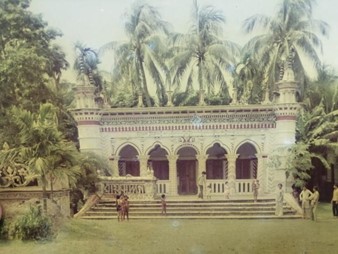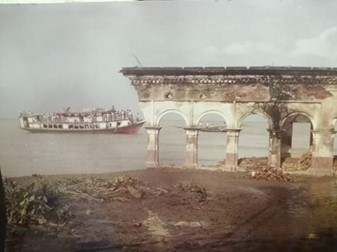Climate change and river erosion—what can we learn from the past?
by Graham Wright
Jan 27, 2023
5 min
River erosion has affected Bangladesh’s low-lying lands for millennia. The rivers change course over the years and cause loss of land and assets for people who live near the riverbanks. Climate change has added additional complexities to these natural processes and made poor and vulnerable people much worse off. Together, these processes continue to widen the gap between the rich and the poor.
Chars and river erosion

Chars are riverine sand bars of two types: attached chars and island chars (Roy et al., 2015). Madbor Char is, or was, an attached char linked to the mainland under normal river flow conditions. However, as Ahmed Zoheeer, et al., 2021 note, “during the dry seasons, attached chars can be accessed without crossing a river channel. During the floods, many attached floods become island chars.”

So perhaps it was no surprise that in 1993, river erosion prevailed, and the waters of the Padma engorged my brother-in-law’s country home and many of the surrounding fields. The process happened slowly, painfully, and inexorably over three months between August and October until the entire edifice was lost forever. Many poorer families living in Madbor Char were rendered landless and destitute.
This reminds us that while we can safely assume that climate change is exacerbating and accelerating rapid-onset events in the Gangetic delta, these forces have been inherent in the geography for millennia.
The consequences
The impact on vulnerable families is devastating. Sovacool & Linnér, (2015) tell of “Abul Kalam, who used to be a professional fisher, is now a rickshaw puller living with his family of eight in a temporary thatched shack next to the canal of a fishery ghat (landing center for boats).” He migrated to Chittagong city in 2008 after he lost three acres of land due to erosion brought about by the Meghna. He says, “I shifted house three times due to erosion. My family members lived on other land after losing assets. Erosion changes everything; our home, livelihood and the society as well. River erosion is the curse for us”.
This photo essay highlights the process and experience of affected families—many of whom are forced to migrate to cities in quest of work.
And when families are made destitute, women bear much of the burden. As Tanzina Dilshada et al., (2017) note, “when a family becomes poor it affects women in those families in many ways. If there is food shortage, women take less food, which affects their health. It affects girls’ education and increases threat of early marriage, and encourages the dowry system.”
Lessons
So what can we learn from how families have responded to river erosion of land and livelihoods?
First, the people of Bangladesh recognize the impacts of climate change and are responding to them. As Table 1 below shows, the impacts are more multi-dimensional than just increased river erosion. More instances of extreme weather events due to climate change mean that both flooding and summer droughts have increased alongside increased river erosion. Indeed, these extremes are amplifying the erosion processes.

“The study revealed that despite the difficulties of riverbank erosion and other climate change issues, all of the resource-poor households were attempting to sustain and to improve their livelihood through a range of adaptation strategies” Alam et al., (2017).
Perhaps unsurprisingly, the adaptation strategies vary according to the affluence or farm size of the respondents. Almost all farmers had changed both the crops and varieties of rice they plant and the times they plant them to try to manage the changing weather patterns. Many small and landless farmers have diversified into livestock and poultry rearing, often under the guidance of the government or NGOs. And more than half of these poorer households have members who have migrated to cities to earn additional income.
River erosion and the delta dynamics also create new chars, and thus opportunities to live on and farm the rich soil of these sandbars. However, the more affluent households in the area often seize the most viable and least marginal of these opportunities.

My brother-in-law’s family migrated to Dhaka and rebuilt relatively comfortable lives in the capital. The Padma River had created another char a few miles from where Madbor Char once stood. More affluent and influential families in the area soon enclosed and occupied the new char, to the exclusion of the poorer ones. Yet many of the vulnerable families from Madbor Char were left landless, destitute, and struggling to rebuild their lives from those fateful months in 1993.
Written by

 by
by  Jan 27, 2023
Jan 27, 2023 5 min
5 min
Leave comments